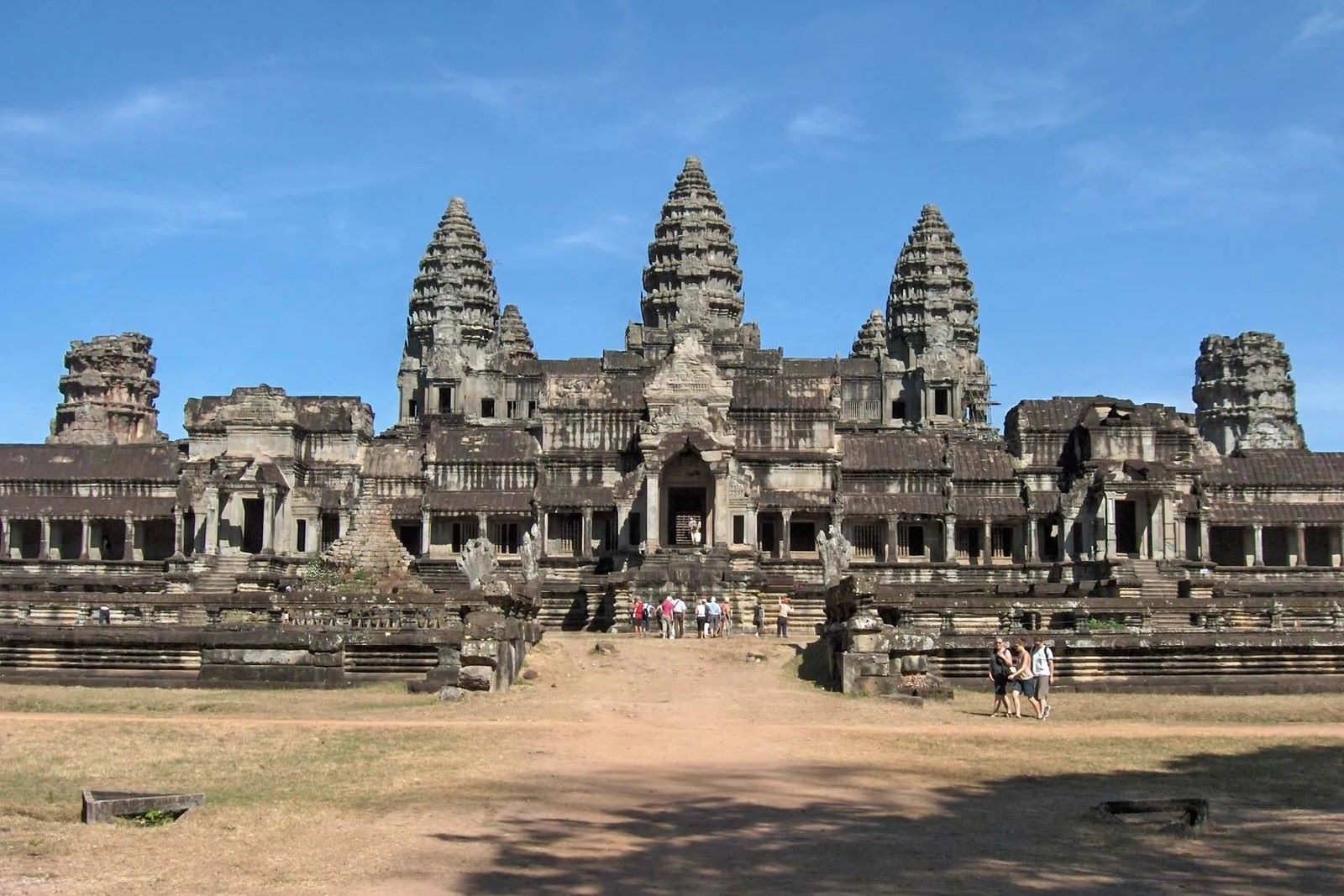Exploring The Mysteries Of Angkor Temple Complex

Have you ever wondered what makes the Angkor Temple Complex so special? This ancient site in Cambodia holds secrets and stories from centuries past. Built by the Khmer Empire, it’s one of the largest religious monuments in the world. Walking through the ruins, you can almost feel the history beneath your feet. From the iconic Angkor Wat to the mysterious Bayon Temple, each structure has its own unique charm. Whether you're an avid history buff or just love exploring new places, the Angkor Temple Complex offers something for everyone. Ready to learn more about this incredible destination? Let's dive in!
The Heart of Angkor: Angkor Wat
Angkor Wat, the crown jewel of the Angkor temple complex, stands as a testament to the grandeur of the Khmer Empire. This architectural marvel, originally a Hindu temple, later transformed into a Buddhist site.
Angkor Wat: The largest religious monument in the world, Angkor Wat is renowned for its stunning bas-reliefs and intricate carvings. The central tower rises majestically, symbolizing Mount Meru, the center of the universe in Hindu and Buddhist cosmology.
The Moat: Surrounding Angkor Wat is a vast moat, adding to the temple's mystique. This water feature not only served as a defensive measure but also represents the oceans surrounding Mount Meru.
The Causeway: Leading to the temple is a grand causeway lined with statues of gods and demons. This path sets the stage for the awe-inspiring experience that awaits inside.
The Enigmatic Faces of Bayon Temple
Bayon Temple, located in the heart of Angkor Thom, is famous for its serene and smiling stone faces. This temple offers a unique glimpse into the spiritual and artistic achievements of the Khmer Empire.
Bayon Temple: Known for its 54 towers adorned with 216 smiling faces, Bayon Temple is a masterpiece of Khmer architecture. Each face is believed to represent the bodhisattva Avalokiteshvara or King Jayavarman VII.
The Bas-Reliefs: Bayon features extensive bas-reliefs depicting everyday life, historical events, and mythological scenes. These carvings provide valuable insights into the culture and history of the Khmer people.
The Central Sanctuary: At the heart of Bayon lies the central sanctuary, a place of worship and meditation. This area offers a peaceful retreat from the bustling temple grounds.
The Jungle-Embraced Ta Prohm
Ta Prohm, often referred to as the "Tomb Raider Temple," is famous for its overgrown trees and roots intertwining with the temple ruins. This site offers a unique blend of nature and architecture.
Ta Prohm: Unlike other temples, Ta Prohm has been left in much the same condition as it was found. The massive roots of ancient trees envelop the stone structures, creating a hauntingly beautiful scene.
The Trees: The most iconic feature of Ta Prohm is the giant silk-cotton and strangler fig trees. These trees have become an integral part of the temple, their roots snaking through the walls and doorways.
The Hall of Dancers: One of the most enchanting areas of Ta Prohm, the Hall of Dancers, features intricate carvings of celestial dancers, or apsaras. This hall showcases the artistic prowess of the Khmer craftsmen.
The Majestic Preah Khan
Preah Khan, meaning "Sacred Sword," is a sprawling temple complex that served as a Buddhist monastery and university. This site is rich in history and architectural beauty.
Preah Khan: Built by King Jayavarman VII, Preah Khan is dedicated to his father. The temple complex includes numerous halls, courtyards, and shrines, each with its own unique charm.
The Garuda Statues: Scattered throughout Preah Khan are statues of Garuda, a mythical bird-like creature. These statues add an element of myth and legend to the temple's atmosphere.
The Sacred Sword: Legend has it that Preah Khan housed a sacred sword, symbolizing the king's power and authority. While the sword itself is long gone, the temple's name and history continue to captivate visitors.
The Hidden Gem of Banteay Srei
Banteay Srei, known as the "Citadel of Women," is a small yet exquisitely detailed temple. This site is celebrated for its intricate carvings and pink sandstone structures.
Banteay Srei: Despite its smaller size, Banteay Srei boasts some of the finest carvings in Angkor. The temple's pink sandstone walls are adorned with elaborate scenes from Hindu mythology.
The Devatas: The temple is famous for its devatas, or female deities, carved into the walls. These figures are depicted with remarkable detail, showcasing the skill of the Khmer artisans.
The Central Sanctuary: At the heart of Banteay Srei lies the central sanctuary, a beautifully decorated chamber that once housed a sacred linga. This area remains a focal point for visitors seeking to appreciate the temple's artistry.
The Timeless Allure of Angkor
Angkor Temple Complex offers a glimpse into a world filled with history, culture, and architectural brilliance. Wandering through Angkor Wat, Bayon Temple, and Ta Prohm, you can feel the echoes of a bygone era. Each stone, carving, and corridor tells a story of the Khmer Empire's grandeur. The intricate details and sheer scale of these temples leave visitors in awe.
Planning a visit to Angkor? Make sure to allocate enough time to fully appreciate the vastness and beauty of this UNESCO World Heritage site. Early morning visits can help you avoid the crowds and catch the stunning sunrise over Angkor Wat. Hiring a knowledgeable guide can also enrich your experience, providing deeper insights into the history and significance of each temple.
Angkor's timeless allure continues to captivate travelers from around the globe, making it a must-visit destination for anyone interested in history and culture.

